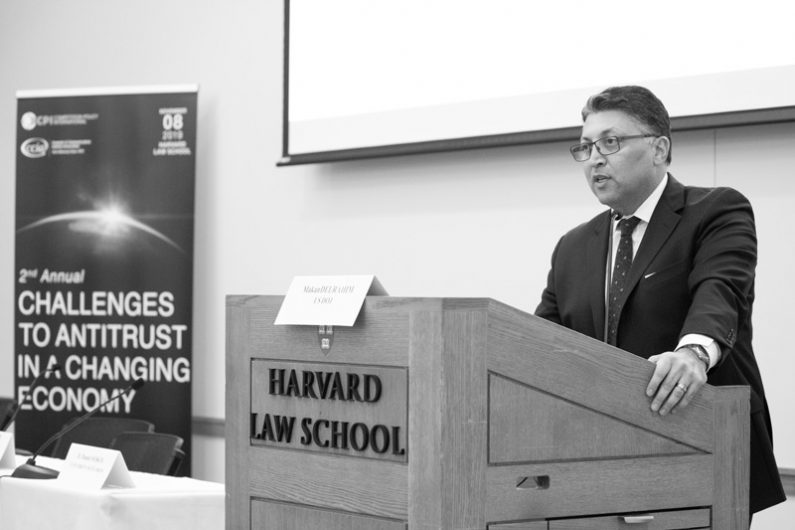
“Reflections”: Looking Back and Looking Ahead on Recent Innovations in Merger Review at the Antitrust Division
I. Introduction
Thank you to the Georgetown Law Global Antitrust Enforcement Symposium for inviting me back to participate today.
As some of you know, I have a background as a patent lawyer, so I have a particular affinity for innovation. Fortunately for me, innovation is an important byproduct of protecting competition through antitrust enforcement. I am also pleased that innovation is a defining feature of my tenure as Assistant Attorney General of the Antitrust Division. Last week marked the three-year anniversary of when I was confirmed by the Senate and sworn in as Assistant Attorney General, so I would like to take this opportunity to reflect on lessons I have learned in my tenure, and to highlight some of the innovations at the Division that have resulted from those lessons.
As many of you know, while Assistant Attorney General, I have sought to increase transparency regarding the Division’s practices. For example, we recently issued the Vertical Merger Guidelines, which describe how the agencies evaluate vertical transactions. The Division’s guidelines on this topic were 36 years old, and much had changed in the way we looked at these transactions. This is not surprising. To give you a sense of the world 36 years ago, we were navigating using paper maps, cleaning and rewearing our contact lenses, regularly standing in line at the bank, and calling on payphones.
We have also been seeing the dividends from innovations in our transparency and in our processes. For example, we created a model timing agreement and a model voluntary request letter and made them available on our website. These measures provide greater transparency to parties, allowing them to better anticipate the merger review process. They also expedite our merger reviews.
When I think about the importance of transparency, I am reminded of why icebergs are so hazardous to ships. It is because so much of the ice – almost 90% – is below the water and can’t be seen. As a result, many ships simply avoid altogether the areas where icebergs are floating. Similarly, a lack of transparency can make venturing forth with transactions perilous for parties, and can chill procompetitive transactions. I am pleased that we have found ways to innovate at the Division to increase transparency for parties. For example, we have increased transparency when we compel the production of documents or testimony, when we engage in negotiations about remedies, and when we bring a complaint in court versus resolving a matter with a fix-it-first remedy or arbitration.
I. Civil Process Updates
Let me begin by turning to the recent updates to the Division’s Civil Investigative Demand (CID) forms and deposition process, which represent a step towards the promotion of transparency and due process in Division investigations. These updates were made to memorialize what has always been true in our civil investigative processes: information provided to the Division in response to a CID may be used by the Department in other civil, criminal, administrative, or regulatory proceedings. Specifically, the Division has implemented the following updates:
First, all CID forms will now provide notice to recipients that their documents, answers to interrogatories, and/or testimony may be used by the Department of Justice in other civil, criminal, administrative, or regulatory cases or proceedings. CIDs issued to individuals will also now include a Fifth Amendment notice.
Second, attorneys taking oral testimony pursuant to a CID will ask questions at the outset of every deposition confirming that the deponent understands the notice provided in the CID. It is also worth reiterating that consistent with longstanding Division and Department policy, civil attorneys cannot and will not comment on the existence or status of other investigations, criminal or otherwise. Companies and individuals seeking information about the status or existence of criminal proceedings must contact the Division’s criminal program with any questions.
Featured News
T-Mobile’s Acquisition of Ka’ena Corporation Receives FCC Approval
Apr 26, 2024 by
CPI
UK Regulator Announces Two New Senior Executive Appointments
Apr 26, 2024 by
CPI
Paramount Global and Skydance Media Near Merger Deal, Eyeing CEO Change
Apr 26, 2024 by
CPI
BHP Unveils £31bn Mining Megamerger Proposal with Anglo American
Apr 25, 2024 by
nhoch@pymnts.com
ByteDance Prefers Shutdown Over Sale of TikTok Amid US Ban Threats
Apr 25, 2024 by
CPI
Antitrust Mix by CPI
Antitrust Chronicle® – Economics of Criminal Antitrust
Apr 19, 2024 by
CPI
Navigating Economic Expert Work in Criminal Antitrust Litigation
Apr 19, 2024 by
CPI
The Increased Importance of Economics in Cartel Cases
Apr 19, 2024 by
CPI
A Law and Economics Analysis of the Antitrust Treatment of Physician Collective Price Agreements
Apr 19, 2024 by
CPI
Information Exchange In Criminal Antitrust Cases: How Economic Testimony Can Tip The Scales
Apr 19, 2024 by
CPI